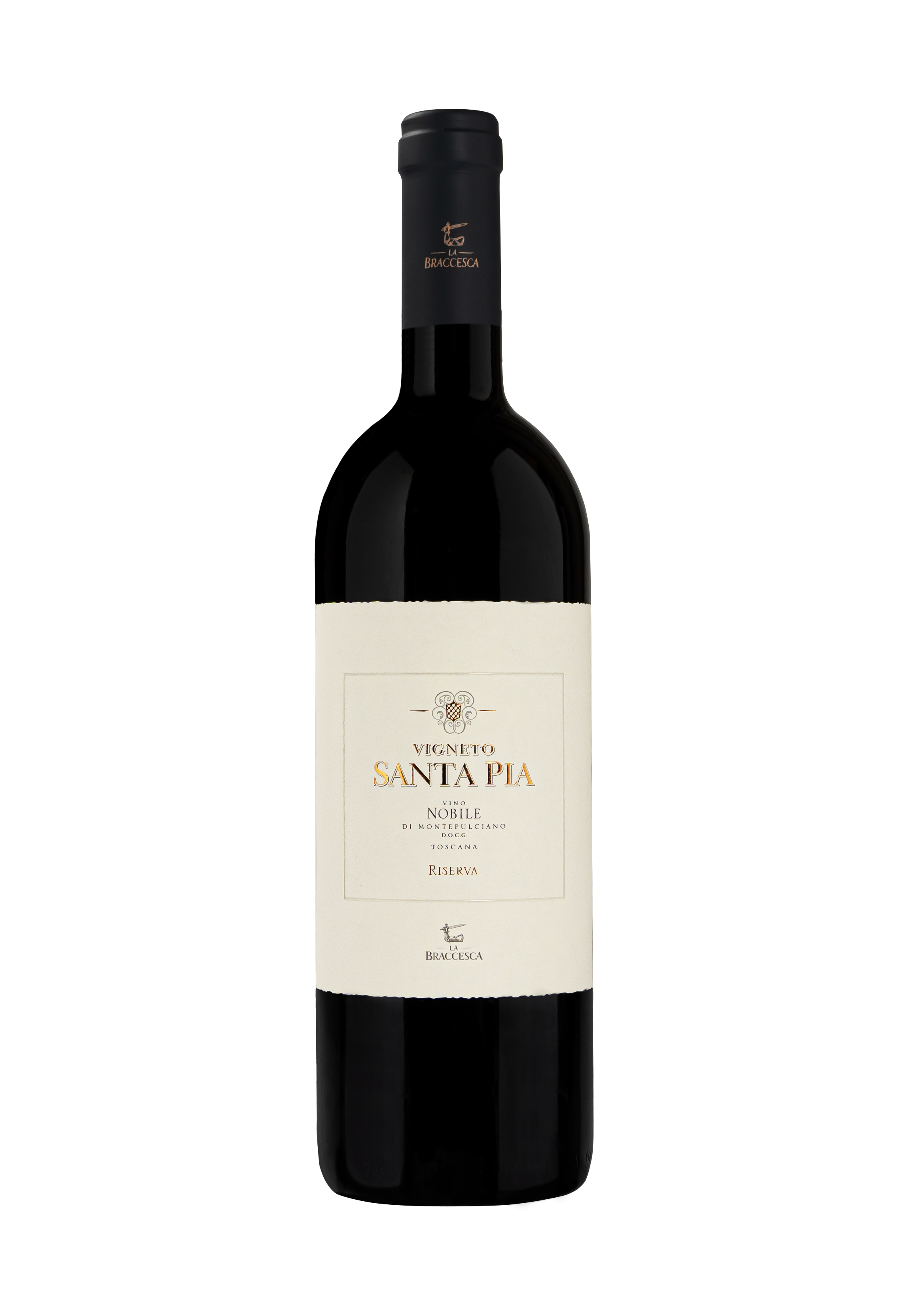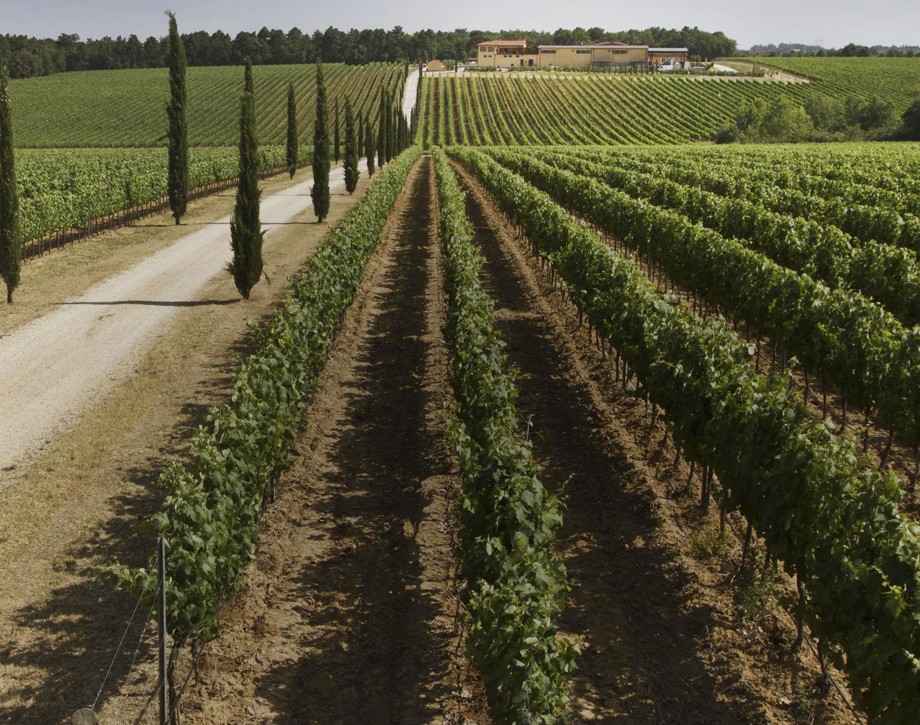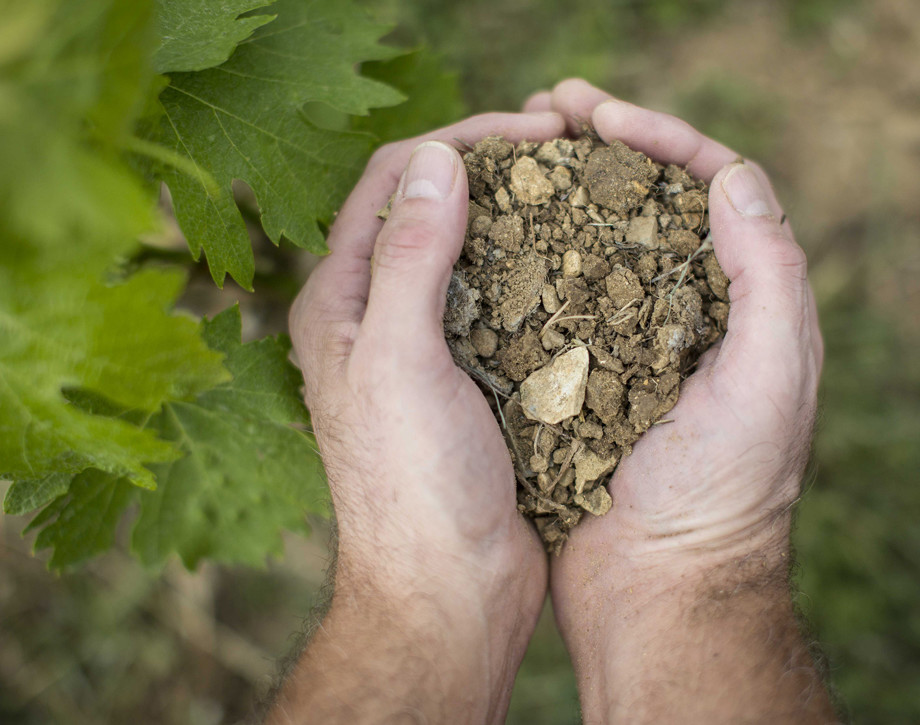Vigneto Santa Pia

Climate
A rainy autumn and a winter with rather low average temperatures and snow caused a 12-15 day delay in new plant growth compared to last year. As if to compensate for this delay, the advantageous meteorological conditions of the spring months were favorable for the maturation of the vines, which were able to develop 10 days earlier than usual. In addition, the months of June, July, and August ended up being rather "cool", characterized by average temperatures around 24° C and by abundant rains in the month of August. Although the rains created some problems for the ripening process and consequently for the harvest, in the end healthy and completely mature grapes were successfully collected. They were of the same superior quality as past harvests and showed great potential.
Vinification
The grapes originating from the Santa Pia Vineyard, in the municipality of Montepulciano, attained the right degree of ripeness in the last days of September. After destemming, the grapes were gently crushed in order to preserve the integrity of the fruit and to prevent the problems of oxidation to the must. This was followed by maceration, which lasted about 20 days, during which the wine completed alcoholic fermentation at temperatures not exceeding 30° C. The wine was then put into French and Hungarian new-wood barrels, where malolactic fermentation was carried out. Barrel-aging continued for 15 months with several rackings. The wine was then bottled and aged for another 20 months approximately.
Historical Data
The La Braccesca estate covers some 1255 acres (508 hectares) where once were located the holdings of the Bracci counts, who gave their name both to the property and its count of arms: an armor-clad arm holding a sword. The overall vineyard surface consists of 850 acres (340 hectares) and is divided into two blocks: the first, 575 acres (233 hectares) is situated on the border between Montepulciano and the neighboring township of Cortona. The second, instead, 255 acres (103 hectares) insize, arrives close to the city itself and includes three highly renowned sub-zones for the production of outstanding red wine: Cervognano, Santa Pia, and Gracciano. Santa Pia is produced from a 37 acre (15 hectare) vineyard situated in the site of the same name, located the terraces below the town of Montepulciano. Its unique soil, medium in texture and consistence, rich in stones and sand, have assisted the ambition to produce an elegant, but at the same time classic, example of Sangiovese, one capable of transmitting the a highly recognizable expression of this historic production zone. The first year of production of Santa Pia was the 2001.
Tasting Notes
Intense and characteristically typical aromas, with hints of fruit and ripe berries. On the palate the wine is complex and well-structured with sweet and vibrant tannins.

The Wine
Santa Pia is produced from a 15-hectare (37 acres) vineyard in an area called Santa Pia, located on the ridges just below the town of Montepulciano. This particular area has sandy loamy soils rich in rocky deposits known as “scheletro” that allow the Antinori’s to create an elegant yet traditional expression of the Sangiovese grape that reflects the characteristics of this historic winemaking area. The first vintage to be produced was 2001.

Climate
A rainy autumn and a winter with rather low average temperatures and snow caused a 12-15 day delay in new plant growth compared to last year. As if to compensate for this delay, the advantageous meteorological conditions of the spring months were favorable for the maturation of the vines, which were able to develop 10 days earlier than usual. In addition, the months of June, July, and August ended up being rather "cool", characterized by average temperatures around 24° C and by abundant rains in the month of August. Although the rains created some problems for the ripening process and consequently for the harvest, in the end healthy and completely mature grapes were successfully collected. They were of the same superior quality as past harvests and showed great potential.
Vinification
The grapes originating from the Santa Pia Vineyard, in the municipality of Montepulciano, attained the right degree of ripeness in the last days of September. After destemming, the grapes were gently crushed in order to preserve the integrity of the fruit and to prevent the problems of oxidation to the must. This was followed by maceration, which lasted about 20 days, during which the wine completed alcoholic fermentation at temperatures not exceeding 30° C. The wine was then put into French and Hungarian new-wood barrels, where malolactic fermentation was carried out. Barrel-aging continued for 15 months with several rackings. The wine was then bottled and aged for another 20 months approximately.
Historical Data
The La Braccesca estate covers some 1255 acres (508 hectares) where once were located the holdings of the Bracci counts, who gave their name both to the property and its count of arms: an armor-clad arm holding a sword. The overall vineyard surface consists of 850 acres (340 hectares) and is divided into two blocks: the first, 575 acres (233 hectares) is situated on the border between Montepulciano and the neighboring township of Cortona. The second, instead, 255 acres (103 hectares) insize, arrives close to the city itself and includes three highly renowned sub-zones for the production of outstanding red wine: Cervognano, Santa Pia, and Gracciano. Santa Pia is produced from a 37 acre (15 hectare) vineyard situated in the site of the same name, located the terraces below the town of Montepulciano. Its unique soil, medium in texture and consistence, rich in stones and sand, have assisted the ambition to produce an elegant, but at the same time classic, example of Sangiovese, one capable of transmitting the a highly recognizable expression of this historic production zone. The first year of production of Santa Pia was the 2001.
Tasting Notes
Intense and characteristically typical aromas, with hints of fruit and ripe berries. On the palate the wine is complex and well-structured with sweet and vibrant tannins.

Tenuta La Braccesca
The estate’s name comes from the historical farm that once stood there, owned by the Count of Bracci, whose coat of arms appears on the estate’s logo; an arm covered with armor brandishing a sword. Marchesi Antinori acquired the estate in 1990. The property extends over an area of 508 hectares (1255 acres) and the vineyards cover an area of 340 hectares (840 acres) divided into two blocks: the first is 366 hectares (904 acres) of which 237 (585 acres) are planted with vineyards and is located on the border between the cities of Montepulciano and Cortona. The other block is 142 hectares (350 acres) of which 103 (254 acres) are planted with vineyards, it extends all the way to Montepulciano encompassing three of the most famous parcels of land known for the production of great red wines: Cervognano, Santa Pia and Gracciano.

Soil
Sandy loam rich in very fine gravel.
















